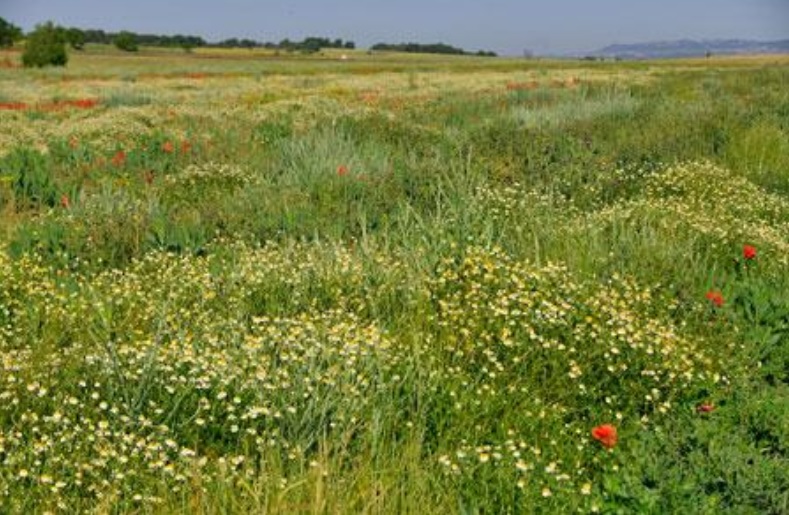Changes to the Common Agricultural Policy could compromise biodiversity and long-term agricultural sustainability in Europe
Fallow land with natural vegetation cover in the Plana de Lleida cereal region / Jordi Bas
After the outbreak of the war in Ukraine, the European Commission has approved a series of changes to compensate for the foreseeable shortage of grain imports. A European team of experts, led by researchers from the Autonomous University of Madrid (UAM), maintains that these changes will have a negative impact on biodiversity and will intensify agricultural and livestock production.
The latest changes in agricultural policy in the European Union will have a disproportionate impact on biodiversity and will support further intensification of livestock production. This is stated by a European team of ecologists and biodiversity experts in a recent communication published in the journal Communications Earth and Environment .
"The environmental requirement of the Common Agricultural Policy has been relaxed, allowing the cultivation of fallow land to produce animal feed and cover the deficit in exports from Ukraine and Russia," say the team's representatives. "The conversion of these semi-natural habitats will have a very negative impact on agricultural biodiversity and food security."
Common Agricultural Policy
The new Common Agricultural Policy (CAP) of the European Union (2023-2027) aims to reverse the current environmental degradation and the decline of biodiversity in European agricultural landscapes by setting three objectives: contribute to the mitigation of climate change; support the efficient management of natural resources and reverse the loss of biodiversity.
After the outbreak of the war in Ukraine, the European Commission has approved a series of changes in the short and medium term that relax the environmental commitments of the CAP to compensate for the foreseeable shortage of grain imports and improve food security. Specifically, what is proposed is to allow the cultivation of fallow lands that until now were part of the "Ecological Focus Areas" contemplated in the green payment of the CAP.
The arguments that denounce the negative impact of this measure are based on a review of European agricultural statistics, as well as on the main research results of the relationship between agricultural management and biodiversity. In the words of Mario Díaz, co-author of the work and researcher at the National Museum of Natural Sciences (MNCN-CSIC): “We have spent decades studying the relationships between agricultural uses and biodiversity and associated ecosystem services. Our studies show that extensive agriculture generates environmental benefits as opposed to agricultural intensification or abandonment that generate negative effects”.
"Europe should move towards a more sustainable agriculture with the environment because, according to studies carried out to date, in the long term, intensive farming and agriculture depletes the productivity of the land", comments Manuel Morales, main author of the communication, signed by members of different European research centers, including the Autonomous University of Madrid (UAM), the Forestry Science and Technology Center of Catalonia (CTFC), the Universities of Barcelona and Valladolid and several CSIC centers (MNCN, EBD, IREC) .
“Ultimately, these policy changes may compromise biodiversity and long-term agricultural sustainability in Europe, in favor of modest increases in current agricultural production and uncertain improvements in food security,” concludes Gerard Bota of the CTFC.
_____________________
Bibliographic reference:
Morales, MB, Díaz, M., Giralt, D., Sardà-Palomera, F., Traba, J., Mougeot, F., Serrano, D., Mañosa, S., Gaba, S., Moreira, F. , Pärt, T., Concepción, ED, Tarjuelo, R., Arroyo, B., Bota, G. 2022. Protect European green agricultural policies for future food security . Communications Earth & Environment 3:217. https://doi.org/10.1038/s43247-022-00550-2
Source: UAM Gazette .
